11 JUN 2016 NILGAI_BLUE BULL
Nilgai
From Wikipedia, the free encyclopedia
"Blue bull" redirects here. For the Belgian Blue Bull, see Belgian Blue. For the South African rugby union team, see Blue Bulls.
| Nilgai | |
|---|---|
 | |
| Nilgai in the Hellabrunn Zoo, Munich | |
| Scientific classification | |
| Kingdom: | Animalia |
| Phylum: | Chordata |
| Class: | Mammalia |
| Order: | Artiodactyla |
| Family: | Bovidae |
| Subfamily: | Bovinae |
| Genus: | Boselaphus Blainville, 1816 |
| Species: | B. tragocamelus |
| Binomial name | |
| Boselaphus tragocamelus (Pallas, 1766) | |
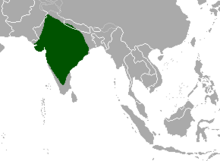 | |
| Range of the nilgai | |
| Synonyms[2] | |
| |
The nilgai or blue bull (Boselaphus tragocamelus) (pronounced /ˈnil-ˌgī/) is the largest Asian antelope and is endemic to the Indian subcontinent. The sole member of the genus Boselaphus, the species was described and given its binomial name by German zoologist Peter Simon Pallas in 1766. The nilgai stands 1–1.5 metres (3.3–4.9 ft) at the shoulder; males weigh 109–288 kilograms (240–635 lb), and the lighter females 100–213 kilograms (220–470 lb). A sturdy thin-legged antelope, the nilgai is characterised by a sloping back, a deep neck with a white patch on the throat, a short crest of hair along the neck terminating in a tuft, and white facial spots. A column of coarse hair, known as the "pendant", hangs from the dewlap ridge below the white patch. Sexual dimorphism is prominent – while females and juveniles are orange to tawny, adult males have a bluish grey coat. Only males possess horns, 15–24 centimetres (5.9–9.4 in) long.
The nilgai is diurnal (active mainly during the day). Three distinct kinds of groups are formed: one or two females with young calves, three to six adult and yearling females with calves, and all-male groups with two to 18 members. Typically tame, the nilgai may appear timid and cautious if harassed or alarmed; it flees up to 300 metres (980 ft)-or even 700 metres (2,300 ft), galloping away from the source of danger. Herbivores, nilgai prefer grasses and herbs, though woody plants are commonly eaten in the dry tropical forests of India. Females become sexually mature by two years, while males become sexually active only after four or five years. The time of the year when mating takes place varies geographically, but a peak breeding season lasting three to four months can be observed at most places. Gestation lasts eight to nine months, following which a single calf (sometimes twins or even triplets) is born. As typical of several bovid species, nilgai calves stay hidden for the first few weeks of their lives. The lifespan of the nilgai is around ten years.
Nilgai prefer areas with short bushes and scattered trees in scrub forests and grassy plains. They are common in agricultural lands, but hardly occur in dense forest. Major populations occur in the Terai lowlands in the foothills of theHimalayas (northern India), but the antelope is sparsely found in Nepal and Pakistan and is extinct in Bangladesh. Nilgai were first introduced to Texas in the 1920s and the 1930s. As of 2008, the feral population in Texas is nearly 37,000. The nilgai is categorised as Least Concern by the IUCN. The nilgai has been associated with Indian culture since the Vedic period (1500–500 BCE). Hindus revere the nilgai as sacred and associate it with the cow, the mother animal in Hinduism, through its name and loosely similar physical features. They were hunted in the Mughal era (16th to 19th centuries) and are depicted in numerous miniatures. Nilgai have been considered a pest in several north Indian states as they ravage crop fields and cause considerable damage. The nilgai has been declared as vermin in Bihar.
Contents
[hide]Etymology[edit]
The vernacular name "nilgai" (pronounced /ˈnil-ˌgī/) comes from the fusion of the Hindi or Urdu nil ("blue") and gai (cow). The first recorded use of this word was in 1882.[3] Alternative origins could be from the Sanskrit gabhih ("female bovid"), or Persian gaw ("cow").[2] The nilgai has been referred to by a variety of names: neelghae,[2] nilgau, nilgo,[1] nylghau,[4] nylghai[5] and white-footed antelope.[2] During Mughal emperor Aurangzeb's reign (1658–1707) over India, the nilgai was known by the name nilghor ("nil" for "blue" and "ghor" for "horse").[6]
Taxonomy[edit]
The scientific name of the nilgai is Boselaphus tragocamelus. The nilgai is the sole member of the genus Boselaphus and placed in the family Bovidae. The species was described and given its binomial name by the German zoologist Peter Simon Pallas in 1766.[7] He based his description on a 1745 account of a male nilgai by physician James Parsons in the 43rd volume of Philosophical Transactions (now known as the Philosophical Transactions of the Royal Society).[8][9] The nilgai has only one other relative in the tribe Boselaphini, the four-horned antelope (the sole member of Tetracerus).[10]
The generic name Boselaphus comes from the combination of the Latin bos ("cow" or "ox") and the Greek elaphos ("deer").[11] The specific name tragocamelus comes from the join of the two Greek words tragos ("he-goat") andkamelos ("camel"). The binomial combination was first used by English zoologist Philip Sclater in 1833.[2] Boselaphus has often been misspelled as Buselaphus (first used by Ludwig Reichenbach in 1845 for the red hartebeest)[12]and Bosephalus (first used by Thomas Horsfield in 1851, when he mistook a nilgai specimen for a hartebeest in a museum catalogue of the East India Company).[2]
Evolution[edit]
A 1992 phylogenetic study of mitochondrial DNA sequences showed a strong possibility of a clade consisting of Boselaphini, Bovini and Tragelaphini. Bovini consists of the genera Bubalus, Bos, Pseudoryx (saola), Syncerus (African Buffalo), Bison and the extinct Pelorovis. Tragelaphini consists of two genera: Taurotragus (eland) and Tragelaphus. A closer relationship between Boselaphini and Tragelaphini was predicted,[13] and seconded by a similar study in 1999.[14]
Though the tribe Boselaphini has no African representation today,[15] fossil evidence supports its presence in the continent in the prehistoric times, as early as the late Miocene-the two living antelopes of this tribe, in fact, have been found to have a closer relationship with the earliest bovids (like Eotragus species) than do the other bovids.[5][16] This tribe originated at least 8.9 million years ago, in much the same area where the four-horned antelope lives today, and may represent the most "primitive" of all living bovids, having changed the least since the origins of the family.[17] The extant and extinct boselaphine forms show similar development of the horn cores (the central bony part of the horn).[18] Though the extant nilgai females lack horns, historic relatives of the antelope had horned females.[19]
Fossils of Protragoceros labidotus and Sivoreas eremita dating back to the late Miocene have been discovered in the Ngorora formation (Kenya);[20] fossils from the same period have also been excavated in the easternMediterranean region.[19] Other Miocene fossils of boselaphines discovered are of Miotragocerus, Tragocerus and Tragoportax; fossils of Miotragoceros are not apparent in Africa (only M. cyrenaicus has been reported from the continent), but have significant presence in the Shiwalik Hills in India and Pakistan, as do several Tragoportax species. A 2005 study showed the migration of Miotragoceros to eastern Asia around eight million years ago.[21] Alan W. Gentry of the Natural History Museum reported the presence of another boselaphine, Mesembriportax, from Langebaanweg (South Africa).[22]
Remains of the nilgai dating back to the Pleistocene have been discovered from the Kurnool caves in southern India.[23] Evidence suggests that they were hunted by humans during the Mesolithic period (5,000 to 8,000 years ago).[24][25]
Description[edit]
The nilgai is the largest antelope in Asia.[6][26] It stands 1–1.5 metres (3.3–4.9 ft) at the shoulder;[27] the head-and-body length is typically between 1.7–2.1 metres (5.6–6.9 ft).[6] Males weigh 109–288 kilograms (240–635 lb); the maximum weight recorded is 308 kilograms (679 lb). Females are lighter, weighing 100–213 kilograms (220–470 lb).[27] Sexual dimorphism is prominent; the males are larger than females and differ in colouration.[2]
A sturdy thin-legged antelope, the nilgai is characterised by a sloping back, a deep neck with a white patch on the throat, a short mane of hair behind and along the back ending behind the shoulder, and around two white spots each on its face, ears, cheeks, lips and chin.[6] The ears, tipped with black, are 15–18 centimetres (5.9–7.1 in) long.[2] A column of coarse hair, known as the "pendant" and around 13 centimetres (5.1 in) long in males, can be observed along the dewlap ridge below the white throat patch.[27] The tufted tail, up to 54 centimetres (21 in),[28] has a few white spots and is tipped with black.[6] The forelegs are generally longer,[28] and the legs are often marked with white "socks".[2]
| Nilgai – male and female | ||||
|---|---|---|---|---|
|
While females and juveniles are orange to tawny, males are much darker – their coat is typically bluish grey. The ventral parts, the insides of the thighs and the tail are all white.[28] A white stripe extends from the underbelly and broadens as it approaches the rump, forming a patch lined with dark hair.[27] Almost white, though not albino, individuals have been observed in the Sariska National Park (Rajasthan, India)[29] while individuals with white patches have been recorded at zoos.[30] The hairs, typically 23–28 centimetres (9.1–11.0 in) long, are fragile and brittle.[31] Males have thicker skin on their head and neck that protect them in fights.[6] The coat is not well-insulated with fat during winter, and consequently severe cold might be fatal for the nilgai.[32]
Only males possess horns, though a few females may be horned as well. The horns are 15–24 centimetres (5.9–9.4 in) long but generally shorter than 30 centimetres (12 in).[6] Smooth and straight, these may point backward or forward.[33] The horns of the nilgai and the four-horned antelope lack the ringed appearance typical of those of other bovids.[34]
The maximum recorded length of the skull is 376 millimetres (14.8 in). The dental formula is 0.0.3.33.1.3.3. The milk teeth are totally lost and the permanent dentition completed by three years of age. The permanent teeth get degraded with age, showing prominent signs of wear at six years of age. The nilgai has sharp ears and eyes,[35] though its sense of smell is not as acute.[36]
Ecology and behavior[edit]
The nilgai is diurnal (active mainly during the day). A 1991 study investigated the daily routine of the antelope and found feeding peaks at dawn, in the morning, in the afternoon and during the evening.[37] Females and juveniles do not interact appreciably with males, except during the mating season. Groups are generally small, with ten or fewer individuals, though groups of 20 to 70 individuals can occur at times.[27] In a 1980 study in the Bardiya National Park (Nepal), the average herd size was of three individuals;[38] In a 1995 study in the Gir National Park (Gujarat, India), herd membership varied with season.[39] However, three distinct groupings are formed: one or two females with young calves, three to six adult and yearling females with calves, and male groups with two to 18 members.[40]
Typically tame, the nilgai may appear timid and cautious if harassed or alarmed; instead of seeking cover like duikers it would flee up to 300 metres (980 ft)-or even 700 metres (2,300 ft) on galloping-away from the danger.[41]Though generally quiet, nilgai have been reported to make short guttural grunts when alarmed, and females to make clicking noises when nursing young.[40][42] Alarmed individuals, mainly juveniles below five months, give out a coughing roar (whose pitch is highest in case of the juveniles) that lasts half a second, but can be heard by herds less than 500 metres (1,600 ft) away and responded to similarly.[2]
Fights take place in both sexes and involve pushing their necks against each other or ramming into one another using horns. Fights can be gory; despite the protective skin deep, lacerated wounds and even deaths might occur.[2]Display behaviour focuses on the throat patch and the beard, and threatening opponents by pointing the horns toward them. A young male was observed making a submissive display in the Sariska Reserve by kneeling before an adult male, who stood erect.[40] The nilgai mark their territories by forming dung piles as much as 50 centimetres (20 in) in radius. The defecation process is elaborate-the antelope stands with his legs about a metre apart, with the rump lowered and the tail held almost vertical; it stays in the same posture for at least ten seconds after relieving itself. The process is not as elaborate in the females as it is in the males.[41]
In India, the nilgai shares its habitat with the four-horned antelope, chinkara, chital and blackbuck; its association with the gaur and the water buffalo is less common.[2] In the Ranthambore National Park (Rajasthan, India) the nilgai and the chinkara collectively prefer the area rich in Acacia and Butea species, while the sambar deer and the chital preferred the forests ofAnogeissus and Grewia species.[43] In India, the Indian tiger and the lion may prey on the nilgai but they are not significant predators of this antelope.[43] Leopards prey on the nilgai, though they prefer smaller prey.[44] Dholes generally attack juveniles.[2] Other predators include wolves[45] and striped hyenas.[2]
Diet[edit]
Herbivores, the nilgai prefer grasses and herbs; woody plants are commonly eaten in the dry tropical forests of India. Studies suggest they may be browsers[38] or mixed feeders[46] in India, whereas they are primarily grazers in Texas.[41] The nilgai can tolerate interference by livestock and degradation of vegetation in its habitat better than deer,[41] possibly because they can reach high branches and do not depend on surface vegetation.[40] The sambar deer and nilgai in Nepal have similar dietary preferences.[38] Diets generally suffice in protein and fats.[47] The protein content of the nilgai's should be at least seven percent.[48] The nilgai can survive for long periods without water and do not drink regularly even in summer.[2][49] However, a nilgai died in Dwarka (India) allegedly due to the heat wave and acute shortage of water.[50]
A 1994 study of the nilgai's diet in the Sariska Reserve revealed its preference for herbs and grasses; grasses became more important in the rainy season, while during winter and summer it fed additionally on flowers (Butea monosperma), foliage (Anogeissus pendula, Capparis sepiaria, Grewia flavescens and Zizyphus mauritiana), pods (Acacia nilotica, A. catechu and A. leucophloea) and fruits (Zizyphus mauritiana).[40] Preferred grass species include Cenchrus species, Cynodon dactylon, Desmostachya bipinnata, Scirpus tuberosus and Vetiveria zizanoides. Woody plants eaten include Acacia nilotica, A. senegal, A. leucophloea, Clerodendrum phlomidis, Crotalaria burhia, Indigofera oblongifolia, Morus alba and Zizyphus nummularia; herbs favoured are Cocculus hirsutus, Euphorbia hirta and Sida rhombifolia.[51][52][53] Seeds of Paspalum distichum occurred in the dung of nilgai most of the year; Acacia nilotica and Prosopis juliflora seeds were discovered in the dry season and those of Echinochloa crusgalli during the monsoon.[54]
Reproduction[edit]
Observations of females in southern Texas revealed that ovaries are developed by two years of age and the first birth takes place typically a year later, though in a few cases females as young as one-and-a-half years may mate successfully.[27] Females can breed again around a year after parturition.[2] Males in the same location were found to have active testes by the age of three years, that matured considerably by the next year.[55] Males become sexually active at four or five years. Mating may occur throughout the year, with peaks of three to four months. The time of the year when these peaks occur varies geographically. In Texas, a peak is apparent from December to March.[32] In Bharatpur National Park (Rajasthan, India) the breeding season is from October to February, peaking in November and December. The Sariska reserve witnesses a similar peak in December and January.[40]
In the mating season, rutting males move about in search of females in oestrus.[40] Males become aggressive and fight among themselves for dominance. These fights are characterised by displays of the enlarged chest, the throat patch and the beard while holding the head upright; and threatening the opponent by running with the horns pointed toward him and circling him.[41][56] The victorious bull would protect the vicinity of the targeted female from other males. The courtship typically lasts for 45 minutes. The male, stiff and composed, approaches the receptive female, who keeps her head low to the ground and may slowly walk forward. The male licks her genitalia, upon which the female holds her tail to a side and the male gives out aflehmen response. Finally, the male pushes his chest against her rump, and mounts her.[41]
Gestation lasts eight to nine months, following which a single calf or twins (even triplets at times) are born. In a 2004 study in the Sariska reserve, twins accounted for as high as 80 percent of the total calf population.[40] Births peak from June to October in the Bharatpur National Park, and from April to August in southern Texas. Calves are precocial; they are able to stand within 40 minutes of birth, and forage by the fourth week.[6] Pregnant females isolate themselves before giving birth. As typical of several bovid species, nilgai calves are kept in hiding for the first few weeks of their lives. This period of concealment can last as long as a month in Texas.[41] Calves, mainly males, bicker playfully by neck-fighting.[37] Young males would leave their mothers at ten months to join bachelor groups.[28] The lifespan of the nilgai is typically ten years in Texas.[27]
Habitat and distribution[edit]
Nilgai prefer areas with short bushes and scattered trees in scrub forests and grassy plains. They are common in agricultural lands, but hardly occur in dense woods. In southern Texas, it roams in the prairies, scrub forests and oakforests. It is a generalist animal-it can adapt to a variety of habitats.[2] Though sedentary and less dependent on water, nilgai may desert their territories if all water sources in and around it dry up.[41] Territories in Texas are 0.6 to 8.1 square kilometres (0.23 to 3.13 sq mi) large.[2]
This antelope is endemic to the Indian subcontinent: major populations occur in India, Nepal and Pakistan, whereas it is extinct in Bangladesh. Significant numbers occur in the Terai lowlands in the foothills of the Himalayas; the antelope is abundant across northern India.[57] The Indian population was estimated at one million in 2001.[1] The nilgai were first introduced to Texas in the 1920s and the 1930s in a 6,000 acres (2,400 ha) large ranch near the Norias Division of the King Ranch, one of the largest ranches in the world. The feral population saw a spurt toward the latter part of the 1940s, and gradually spread out to adjoining ranches.[58]
Population densities show great geographical variation across India. Density can be as low as 0.23 to 0.34 individuals per km2 in the Indravati National Park (Chhatisgarh)[59] and 0.4 individuals per km2 in the Pench Tiger Reserve (Madhya Pradesh)[60] or as high as 6.60 to 11.36 individuals per km2 and Ranthambhore National Park and 7 individuals per km2 in Keoladeo National Park (both in Rajasthan).[61] Seasonal variations were noted in the Bardiya National Park (Nepal) in a 1980 study; the density 3.2 individuals per km2 during the dry season and 5 per km2 in April (the start of the dry season).[38] In southern Texas, densities were found to be nearly 3–5 individuals per km2 in 1976.[2]
Historic notes mention nilgai in southern India, but these may have been feral:[62]
Threats and conservation[edit]
The nilgai is categorised as of Least Concern by the International Union for the Conservation of Nature and Natural resources (IUCN).[1] While it is common in India, the nilgai occurs sparsely in Nepal and Pakistan.[57] The major reasons behind its decimation in these two countries and extinction in Bangladesh are rampant hunting, deforestation and habitat degradation in the 20th century. As of 2008, the feral population in Texas was nearly 37,000.[1] Wild populations also exist in the US states of Alabama, Florida and Mississippi and the Mexican state of Tamaulipas, where they have escaped from private exotic ranches. The population around the Texas-Mexico border is estimated to be around 30,000 (as of 2011).[63]
The nilgai is protected under Schedule III of the Wildlife Protection Act of 1972.[64] Major protected areas for the nilgai across India include: Gir National Park (Gujarat); Bandhavgarh National Park, Bori Wildlife Sanctuary, Kanha National Park, Pachmarhi Biosphere Reserve, Panna Tiger Reserve, Pench Tiger Reserve, Sanjay National Park, Satpura National Park (Madhya PRadesh); Tadoba Andhari Reserve (Maharashtra); Kumbhalgarh Wildlife Sanctuary, Ranthambore National Park and Sariska Tiger Reserve (Rajasthan).[65]
Interactions with humans[edit]
Remains of nilgai have been excavated at Pandu Rajar Dhibi (West Bengal, India), suggesting that they were domesticated or hunted in eastern India in the Neolithic period (6500–1400 BCE)[66] and during the Indus Valley Civilisation (3300–1700 BCE) in India.[67][68] There is a reference to the nilgai in the Aitareya Brahmana (a Hindu religious text dated 500–1000 BCE) as the Prajapati (the creator god):[69]
Nilgai are extensively featured in paintings, dagger hilts and texts from the Mughal era (16th to 19th centuries);[70][71] their representation, however, is less frequent than that of horses and camels.[72] On being disturbed while hunting nilgai, the Mughal emperor Jahangir recorded his ire:[73]
Since centuries Indian villagers have associated the nilgai with the cow, a sacred animal revered by Hindus, and the name ("gai" means "cow" in Hindi) indicates the similarity they saw with the cow.[28][74] The nilgai is hardly consumed by Hindus due to its religious significance. Tribes such as the Bishnois traditionally take care of wild animals like the nilgai.[75] The nilgai was not widely hunted until the 20th century, when habitat degradation and poaching became rampant.[76][77] The meat of nilgai is said to be lighter and milder flavoured than blackbuck meat.[33][78]
The populations of nilgai in India are so large that farmers in the states of Bihar, Chhattisgarh, Haryana, Madhya Pradesh, Maharashtra, Rajasthan and Uttar Pradesh have pleaded to the government to cull them. Nilgai herds raid and trample crop fields across these states,[79][80] often causing food shortages.[81][82] Farmers use live electric wires to guard their farms, which kills other animals as well.[83] Farmers in Neemuch (Madhya Pradesh) went on a hunger strikein 2015 demanding compensation for the damage caused by nilgai.[84] Although blackbuck cause a similar problem, the damage caused by them is significantly lower as they merely break off young shoots.[85][86] A 1990 study suggested culling, building enclosures for the antelopes and fencing off agricultural areas as remedies for the menace.[85]
The governments of Bihar,[81] Maharashtra[87] and Uttarakhand[88] have urged the Government of India to declare the nilgai as a vermin; the proposal has been implemented in Bihar, where nilgai can now be hunted to minimise the damages incurred by locals.[81] TheUttar Pradesh government has given farmers and firearm licence holders the right to cull the animals,[89] However, animal rights activists in Maharashtra were unhappy with the decision.[90] The state governments have attempted other initiatives to curb the nilgai menace: in November 2015, the Rajasthan government came up with a proposal to allow shooting nilgai with non-lethal darts to inhibit fertilisation in their bodies, so as to regulate their increasing populations.[91] As the name "nilgai" appeals to the religious sentiments of Hindus, the Government of Madhya Pradesh has sought to officially rename it as rojad (Hindi for "forest antelope") and the Government of Haryana to rename it as roze in a bid to make their culling acceptable.[92][93][94]
A 1994 study drew attention to the ecological value provided by the nilgai in ravines lining the Yamuna River. In summer, the faeces of the antelope contained nearly 1.6 percent nitrogen, that could enhance the quality of the soil up to a depth of 30 centimetres (12 in). Seeds in the droppings could easily germinate and assist in afforestation.[95]
Search Results
Nilgai video - Boselaphus tragocamelus - 01a | ARKive
www.arkive.org › Species › Mammals › Nilgai
Nilgai video - Boselaphus tragocamelus - 08a | ARKive
www.arkive.org › Species › Mammals › Nilgai
Nilgai video - Boselaphus tragocamelus - 00 | ARKive
www.arkive.org › Species › Mammals › Nilgai
May 28, 2011
Nilgai - overview - View incredible Nilgai videos - Boselaphus ... Description; Biology; Range; Habitat; Status ...Nilgai breach: Forest dept. officials catch the antelope - ANI News ...
https://www.youtube.com/watch?v=3asfdD9kTWw
May 26, 2016 - Uploaded by ANI News Official
New Delhi, May 26 (ANI): A nilgai that was spotted running frenzied near ... ambulance of the wildlife ...Nilgai breach: Forest dept. officials catch the antelope - Vidibyte News ...
https://www.youtube.com/watch?v=a85LgkZpwSc
May 26, 2016 - Uploaded by Vidibyte News
A nilgai that was spotted running frenzied near the Parliament House in the ... ambulance of the wildlife ...Nilgai Hunting in South Texas - YouTube
https://www.youtube.com/watch?v=Rc1X-NM6B4k
Feb 9, 2013 - Uploaded by SOUTHERNCAMO
... pleasure of joining my blood brother Kyle in a classic South Texas spot and stalk hunt on a beautiful bull ...'Terrified' nilgai hits police car near Parliament, rescued after 4-hr ...
https://www.youtube.com/watch?v=x8jCdkcFVeg
May 26, 2016 - Uploaded by InKhabar
A “hyperactive and terrified” nilgai that was spotted running frenzied near ... ambulance of the wildlife conservation ...Examining the Social Aspects of Tiger Conservation - NDTV.com
www.ndtv.com › video
Jul 18, 2015
Examining the Social Aspects of Tiger Conservation | NDTV.com Video | This Special episode from ...Nilgai Strays Into North Block Area, Rescued - YouTube
https://www.youtube.com/watch?v=cKT5cOFSQMM
May 26, 2016 - Uploaded by Aaj Tak
A “hyperactive and terrified” nilgai that was spotted running frenzied near ... ambulance of the wildlife conservation ...Watch Video: Terrified Nilgai rescued near Parliament - Life and style
www.mid-day.com › Life and style News › Environment News
May 26, 2016
A 'hyperactive and terrified' Nilgai that caught everyone's attention while ... ambulance of the wildlife ...
Stay up to date on results for nilgai conservation.
Create alertSearch Results
Boselaphus tragocamelus (Bluebuck, Nilgai) - IUCN Red List
www.iucnredlist.org/details/2893/0
About 37,000 feral nilgai are established on Texas ranches. ... Conservation Actions: Occur in numerous National Parks and other Protected Areas in India ...Nilgai - Wikipedia, the free encyclopedia
https://en.wikipedia.org/wiki/Nilgai
Jump to Threats and conservation - The nilgai is categorised as of Least Concern by the International Union for the Conservation of Nature and Natural resources (IUCN). While it is common in India, thenilgai occurs sparsely in Nepal and Pakistan.
People also ask
Nilgai - Boselaphus tragocamelus - IUCN Red List (Species Assessed ...
eol.org/pages/311908/hierarchy_entries/24920930/overview
Nilgai - Boselaphus tragocamelus - IUCN Red List (Species Assessed for Global Conservation) - Overview - Encyclopedia of Life.Nilgai - Boselaphus tragocamelus - Details - Encyclopedia of Life
eol.org/pages/311908/details
Descriptions and articles about the Nilgai, scientifically known as Boselaphus ... International Union forConservation of Nature and Natural Resources. Source: ...ADW: Boselaphus tragocamelus: INFORMATION
animaldiversity.org/accounts/Boselaphus_tragocamelus/
Conservation Status; Other Comments; Contributors; References. Geographic Range. Boselaphus tragocamelus, also called the nilgai antelope, evolved in ...Nilgai in Tadoba Fed by Humans | Conservation India
www.conservationindia.org/gallery/nilgai-in-tadoba-fed-by-humans
Jul 21, 2012 - There is a Nilgai on the banks of the Tadoba Lake in Tadoba-Andhari Tiger Reserve, which has been relocated from a zoo. The Nilgai is ...nilgai | Conservation India
www.conservationindia.org/tag/nilgai
Jul 21, 2012 - Jungle Cat feeding on a Nilgai calf carcass, Velavadar ... and nature conservation by providing reliable information and the tools needed to ...Nilgai / bluebull | Conservation India
www.conservationindia.org/tag/nilgai-bluebull
Sep 30, 2013 - Feral Dogs Bringing Down a Nilgai (Bluebull), Gujarat ... wildlife and natureconservation by providing reliable information and the tools needed ...Nilgai: Blue Antelope of the Anthropocene – Cool Green Science
blog.nature.org/science/2014/06/26/nilgai-blue-antelope-of-the-anthropocene/
Jun 26, 2014 - Once the nilgai roamed expansive Indian plains. ... game ranches harboring non-Searches related to nilgai conservation
Kharghar, Navi Mumbai, Maharashtra - From your Internet address - Use precise location

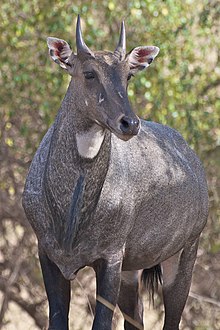
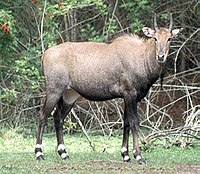



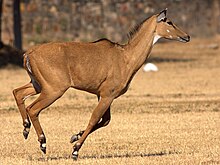


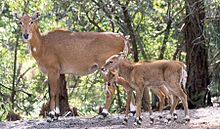


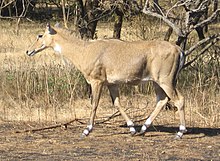

No comments:
Post a Comment